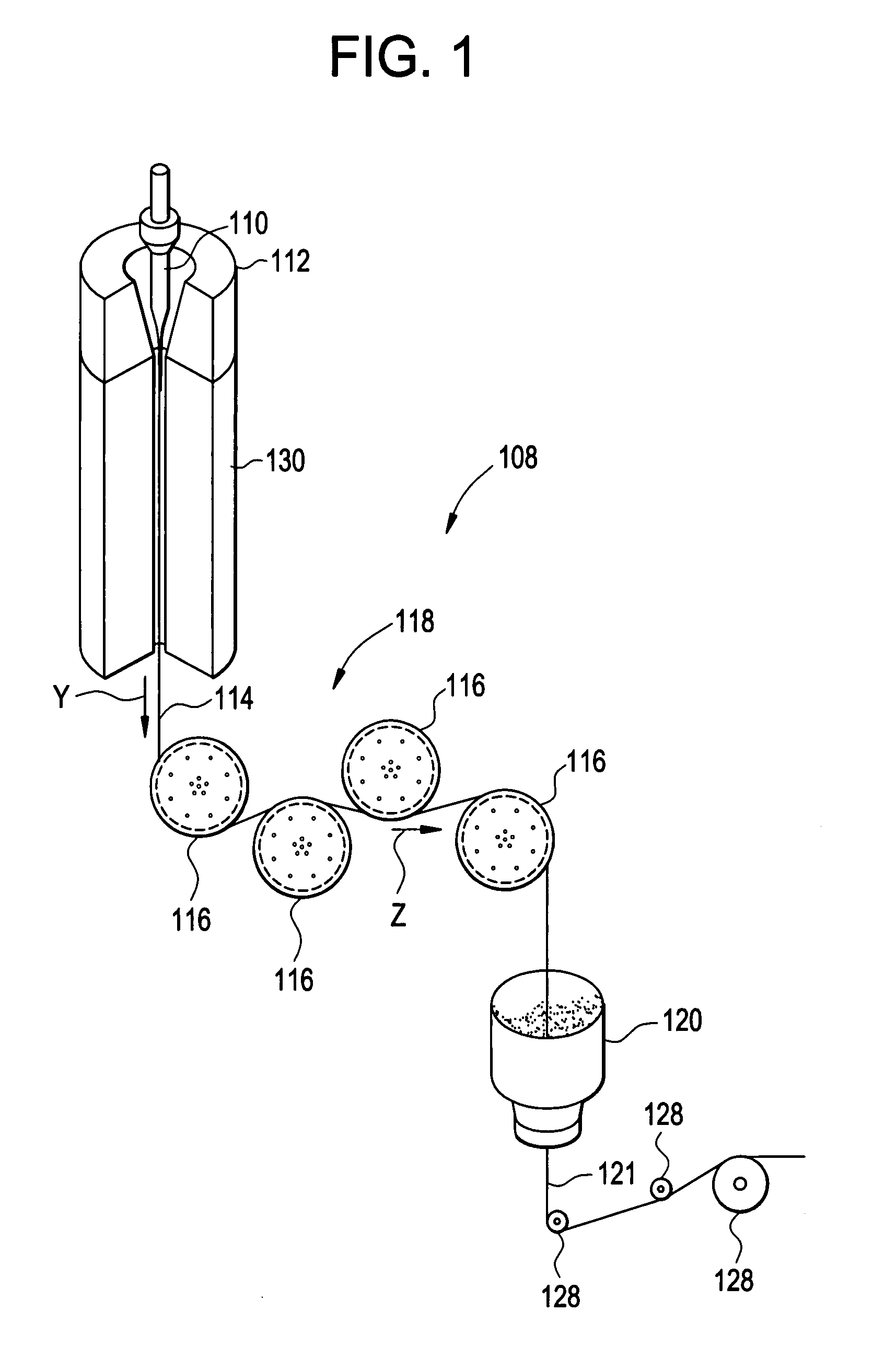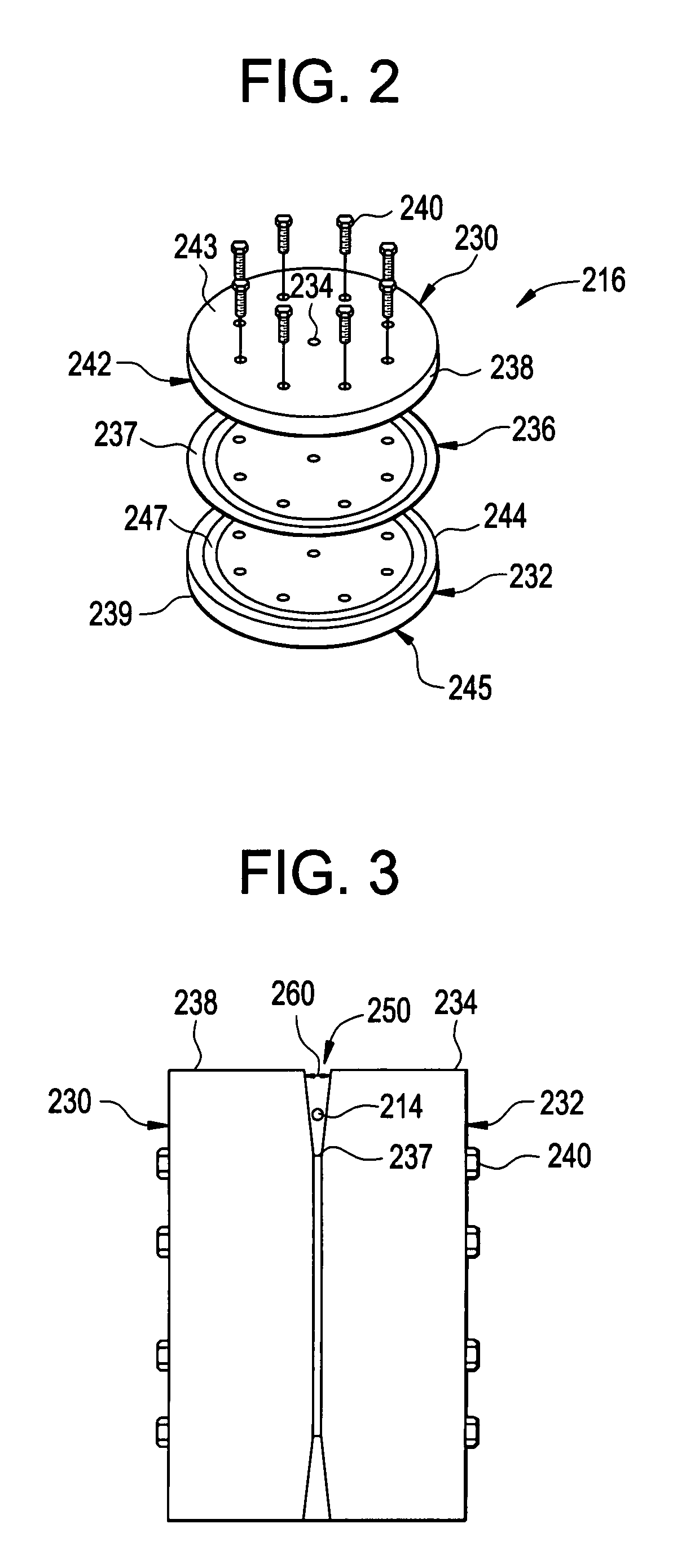Fiber air turn for low attenuation fiber
a low attenuation, fiber air technology, applied in the direction of manufacturing tools, lighting and heating equipment, furniture, etc., can solve the problems of adding height to an existing system, and reducing the efficiency of cooling fibers
- Summary
- Abstract
- Description
- Claims
- Application Information
AI Technical Summary
Benefits of technology
Problems solved by technology
Method used
Image
Examples
examples
[0087]The invention will be further clarified by the following examples.
examples 1-12
[0088]Examples 1-12, representing various embodiments of the present invention, are set forth in Table 1. These examples show the treatment of optical fiber through a treatment zone having the indicated length L in meters, the indicated draw speed of the optical fiber through the treatment zone in meters per second, the indicated fiber surface temperature upon entry of the fiber into the treatment zone in ° C., the indicated fiber surface temperature upon exit of the fiber from the treatment zone in ° C., and the calculated average cooling rate of the fiber while in the treatment zone in ° C. per second.
TABLE 1Treat-AveragementFiber EntryFiber ExitCoolingEx-ZoneSurfaceSurfaceRate inam-LengthFiber DrawTemperatureTemperatureTreatmentple(meters)Speed (m / s)(° C.)(° C.)Zone (° C. / s)1510175012501000251016501350600352017501250200045201650135012005530175012503000653016501350180077.51517501250100087.5151650135060097.525175012501667107.525165013501000117.535175012502333127.535165013501400
PUM
| Property | Measurement | Unit |
|---|---|---|
| surface temperature | aaaaa | aaaaa |
| length | aaaaa | aaaaa |
| total residence time | aaaaa | aaaaa |
Abstract
Description
Claims
Application Information
 Login to View More
Login to View More - R&D
- Intellectual Property
- Life Sciences
- Materials
- Tech Scout
- Unparalleled Data Quality
- Higher Quality Content
- 60% Fewer Hallucinations
Browse by: Latest US Patents, China's latest patents, Technical Efficacy Thesaurus, Application Domain, Technology Topic, Popular Technical Reports.
© 2025 PatSnap. All rights reserved.Legal|Privacy policy|Modern Slavery Act Transparency Statement|Sitemap|About US| Contact US: help@patsnap.com



